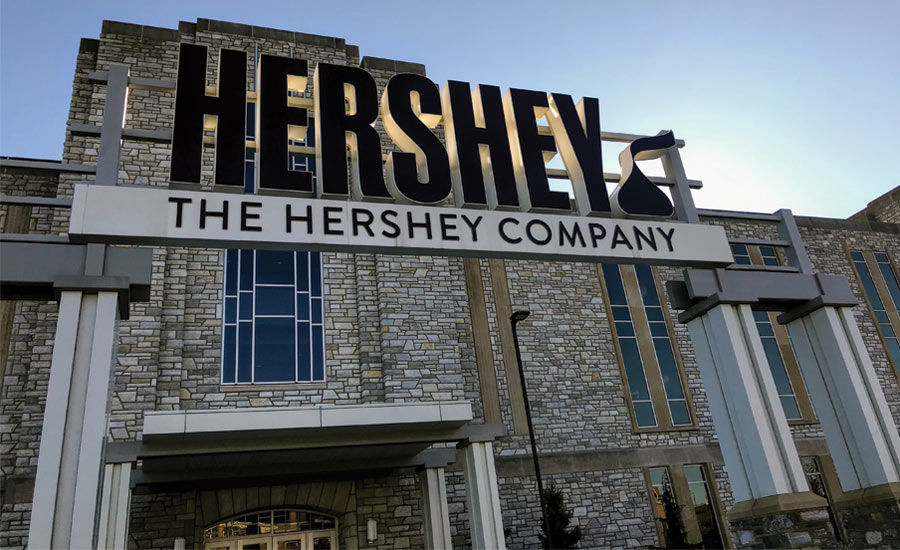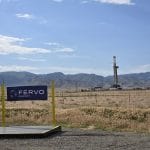The Hershey Company Releases its 2021 ESG Report

The Hershey Company shared its 2021 ESG (environmental, social and governance) Report, highlighting the company’s goals and progress across its priority ESG areas including cocoa sustainability, environmental sustainability, responsible sourcing and human rights, employee well-being, and diversity, equity and inclusion (DEI).
Hershey’s holistic ESG strategy, known as its Shared Goodness Promise, guides the company to make a positive impact at scale and leverage its business to advance more sustainable growth with socially conscious and responsible business practices. This year’s report marks Hershey’s evolution from sustainability to ESG reporting, a reflection of the company’s continued progress integrating ESG priorities into business strategy and operations.
“Hershey has been an integral member of the communities in which we live and operate since our founding,” said Michele Buck, CEO, The Hershey Company. “The culture that Milton Hershey created propels us to build on that legacy as we focus our efforts on integrating the important environmental, social and governance priorities throughout our business. We’ve made meaningful advancements on our global commitments, including our efforts to improve cocoa sustainability and support cocoa-growing communities. We’ve also made significant progress reducing our emissions in line with our science-based targets and were named by Forbes as the World’s Top Female Friendly Company.”
See related article: ICL Publishes Annual Corporate Responsibility ESG Report
Advancing Progress on Cocoa Sustainability
Hershey’s Cocoa For Good Strategy aims to improve farmer livelihoods in cocoa-growing communities through a $500 million investment by 2030 that focuses on four key interconnected areas of impact: nourishing children, empowering youth, prospering communities and preserving ecosystems.
- Sourcing Cocoa: In 2021, Hershey achieved 68 percent cocoa sourcing visibility by volume in Côte d’Ivoire and Ghana. The company’s goal is to achieve 100 percent sourcing visibility by 2025 under which all farmers are polygon mapped to improve traceability and monitor deforestation and are covered by the Child Labor Monitoring and Remediation System (CLMRS) to prevent, monitor and remediate child labor.
- Addressing Child Labor: Hershey signed a five-year agreement to address child labor in Côte d’Ivoire by investing in 2,500 new classrooms and improving foundational literacy and numeracy skills for five million children at the primary school level. This agreement brings together the Jacobs Foundation, the Government of Côte d’Ivoire Ministry of Education and Literacy, and 14 other chocolate producers and cocoa suppliers.
- Offering Nutritious Options: The company distributed ViVi, its vitamin-fortified, peanut-based, ready-to-use therapeutic food that provides children with 30 percent of their daily nutrition intake requirements, to 45,000 children in Côte d’Ivoire and Ghana.
Reducing Environmental Impact to Combat Climate Change
Hershey is making significant progress against its science-based targets, which focus on what the planet needs most from the company and its supply chain.
- Reducing Emissions: Hershey achieved a 48 percent reduction of its Scope 1 and Scope 2 greenhouse gas (GHG) emissions; significant progress toward its 2030 goal of a 50 percent absolute reduction, compared to a 2018 baseline. The company also reported an 18 percent reduction in Scope 3 emissions, on track to reach its goal of a 25 percent absolute reduction in Scope 3 emissions by 2030, compared to a 2018 baseline.
To reduce its Scope 1 and Scope 2 GHG emissions, Hershey continues to transition to renewable energy through investments in three new solar farm projects across the U.S. and purchasing Renewable Energy Credits and Zero-Emissions Credits, an important step as solar farms are being constructed.
With more than 96 percent of Hershey’s total GHG emissions resulting from its extended value chain, the company seeks to further its impact across sourcing, production, operations and manufacturing. Hershey’s key drivers of progress include reducing land use change through 100 percent independently verified cocoa and partnering with dairy and sugar suppliers on sustainable farming practices.
See related article: Chuck Davis Stays in the Game: Stone Point CEO discusses his career and investment priorities at Greenwich Economic Forum, David Rubenstein and Chuck Davis Deliver Fireside Chat at Greenwich Economic Forum
Broadening Diversity, Equity and Inclusion Efforts
Through The Pathways Project, Hershey has increased efforts to bring in a wider range of talent, strengthen its development programs and support diverse and inclusive communities through its supply chain.
- Driving Inclusive Hiring: In 2021, Hershey set a new goal to achieve a college recruiting portfolio that is at least 50 percent diverse and added 23 Historically Black Colleges and Universities (HBCUs) and Hispanic-Serving Institutions (HSIs) to its roster of universities and schools to recruit from.
- Advancing Economic Equality: The company also established a new goal to increase spending with diverse suppliers to $400 million by 2030 to promote economic equality and opportunity for diverse businesses. In 2021, the company spent $92 million with 139 diverse suppliers.
Recognizing that transparency drives accountability, Hershey’s 2021 ESG report contains expanded DEI and human capital disclosures. The report includes data representative of The Equal Employment Opportunity (EEO)-1 U.S. gender and U.S. people of color (POC) workforce data by function, including all corporate and hourly employees. The company has goals in place to increase POC representation in its U.S. workforce, as well as increase gender representation across all employees globally. Having achieved 1-to-1 aggregate gender and POC pay equity for salaried employees in the U.S. in 2020 and 2021 respectively, the company now aims to achieve pay equity for similar job categories across its global salaried employees by 2025.
Integrating ESG into Business Operations
Hershey has built a comprehensive corporate governance model to drive its ESG strategy forward across the business, overseen by its Board of Directors. In 2021, Hershey updated its governance structure to better integrate, manage and optimize ESG as a key part of business operations. The company also established an ESG Advisory Committee of executive team members and senior leaders to discuss proposed investments, disclosures and policy changes and review ESG strategic direction.
Source: Hershey












